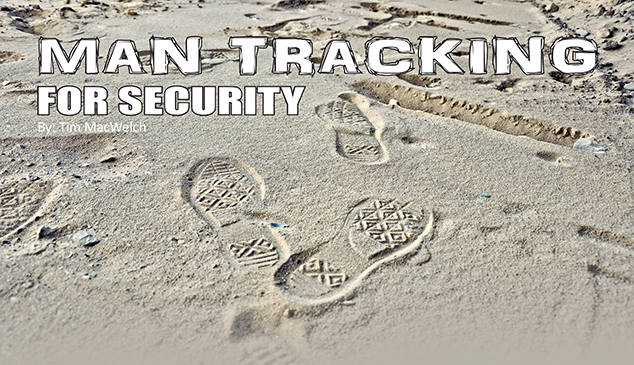
The Urban Dictionary defines “man tracking” as follows:
1) When a sniper hunts another sniper
Let me give you another definition. In my world, man tracking is the art of finding then correctly interpreting the signs and disturbances that people leave behind. But just because it looks easy on TV, doesn’t mean it’s easy. This skill takes practice and devotion just like any other survival skill. It doesn’t hurt if you have keen senses and an eye for small details.

Why would this skill be relevant in a survival situation? For starters, backtracking yourself is pretty handy should you ever become lost or disoriented. Man tracking really shines when you’re responsible for your own security or the security of the group. Here are just a few of the security benefits of this ancient craft:
- Determining activity on the property or near your camp.
- Identifying the movement and number of persons outside your group.
- Finding a lost group member.
- Heightening your situational awareness.
- Reducing or eliminating your own tracks, known as counter tracking.
Dive Right In
A great way to start man tracking training is with your own two feet! You may also be surprised to learn that you can perform man tracking anywhere. Yes, literally anywhere. Lace up your boots and walk across a freshly vacuumed carpet or backyard lawn. Look for your own tracks in the compressed carpet fibers or bent grass blades. Grab a tape measure and record the distance between tracks you made at a walking speed. Most people measure tracks from heel to heel but you can also measure from toe to toe, just keep it consistent either way. You can take measurements from right heel to the next right heel, left to left, and left heel to right heel.
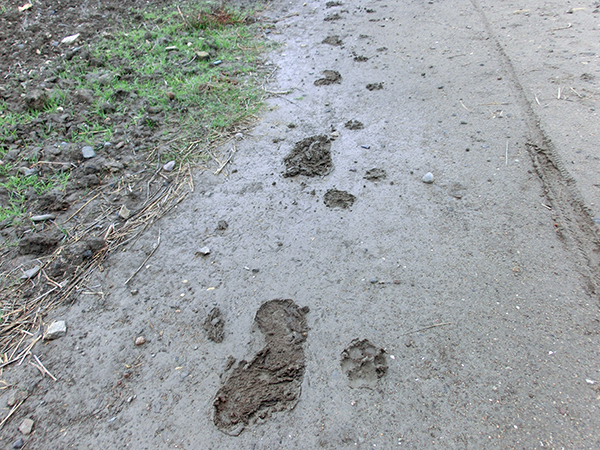
Now try a slow walk and check your tape measure. The distance is smaller as the footprints are closer together. Now try a quick jog. The prints are usually more noticeable from the heavier impact and they’re definitely further apart. Now take your show on the road. Sandy areas are excellent training grounds for beginners, particularly when the sand is damp. Do all kinds of maneuvers through the sandy area and then study the results. Look at the deeper tracks and greater disturbance that running creates. Check the track depth difference and stride when walking with a heavy pack versus walking with no pack.
Most people walk in a very deliberate and predictable way. They also have a typical pace for different situations. Take some measurements to get an average which will help you find missing tracks and lost trails. Each piece of information you collect and study will add to your tracking knowledge. Before you know it, you’ll start to see tracks everywhere.
Broaden Your Search
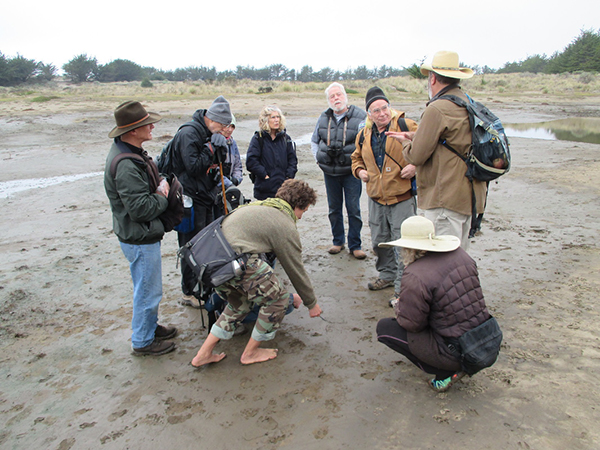
After the first few hours man tracking, you’ll likely have a sore neck from walking around with your head bent forward studying the ground. Don’t feel weird, this happens to most novice trackers. It’s a good reminder for you to lift your head up and look around periodically. There’s more going on than just footprints in the dirt. Here are some other signs you can find.
Aerial Spoor. Okay, credit where credit is due. The movies and TV shows often get this one right. Snapped off branches on a shrub, stones kicked out of their beds, and broken vines are good examples of aerial spoor. So are dropped candy wrappers and crushed cigarette butts. Even pee on the side of a tree is aerial spoor. These random things aren’t always as definitive as a set of human footprints but don’t ignore them. These signs can lead toward the footprints you’ve been after and your quarry.
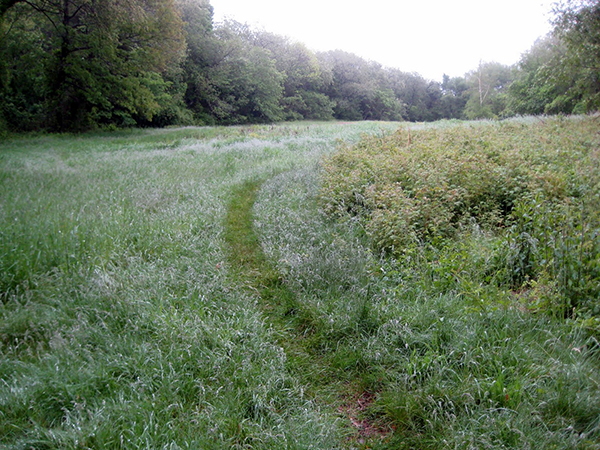
Natural Funnels. Understanding where a person will usually walk, which is the path of least resistance, can be very valuable when looking for tracks and signs. People won’t usually walk through a briar patch when there is open ground available. They also can’t walk through a boulder or tree. So if we look for natural gaps between the places they can’t go or won’t go, we can use these landscape funnels to predict where someone went. For example, you’re following a trail in a forest and you lose the tracks in the leaves. The direction of travel has been fairly consistent and you don’t suspect any counter tracking measures are being used. Think of the gaps between the nearby trees as natural funnels that direct your quarry’s movement. He had to go between two trees somewhere. Check each gap while continuing the direction of travel and being careful not to step in any tracks or sign.
Track Traps. These are areas that really take a footprint. Muddy areas and damp sandy patches in the trail are perfect examples. Most people will stay on the trail even when they hit a track trap. When they do this, they leave you some very clear tracks in these soft substrates. Track traps are also a great place to get a head count on a group of people. If the track trap is longer than 36 inches and the full width of the trail, lay two sticks across the trail 36 inches apart. Then count each footprint you see inside that one yard deep box. Add 1 if the number is an odd number and then divide by two. Over a one yard distance, most people will leave two footprints. So rounding up to an even number and dividing by two will give you a fairly accurate head count on the group that went down that trail. This will work even if they’re all wearing boots with the same tread. Just as a practice for personal security, I always avoid stepping in track traps myself.
Delve Into Details
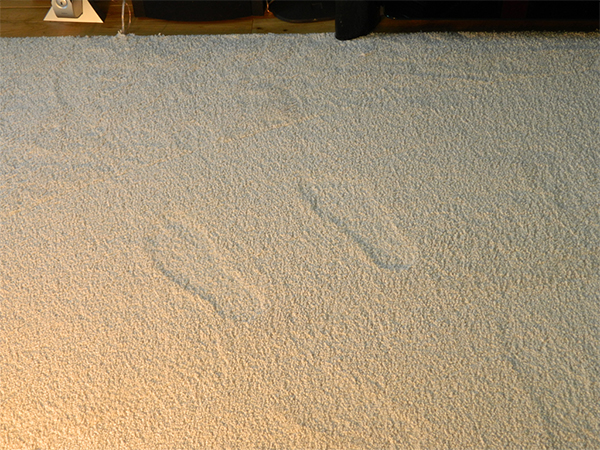
Track Aging. This is one of the hardest aspects of man tracking but one of the most useful. Determining the age of a track provides an important piece of information, but determining when a boot hit the ground can be tricky business. Tracks don’t age at a fixed speed and aren’t made in a vacuum. The environment is the main factor when determining the way that the track ages. Recent precipitation, cycles of freezing and thawing, wind, humidity, sun, and soil type all play a role in aging. An easy way to start with track aging is to make a track with your own boot and watch it deteriorate over the next few weeks. Pay close attention to the changes that occur after rain, high winds, or other significant weather events. It’s also useful to watch tracks intently during the first few hours. Big changes can occur within a short period after the track is made. As examples, tracks in the frost can melt quickly in the morning sun and wet footprints can dry in a matter of minutes. Pay attention to recent weather for track aging too. If you know it rained before dawn but the muddy tracks are free of erosion because they have crisp square edges with nothing washed into the bottom of the track. This will let you know they were made after dawn.
Lost Spoor Procedure. Odds are good that you’re going to lose the tracks at some point. When this happens, you need a plan to pick up the trail again. Most trackers retreat to the last known sign and then walk a 4 or 5 yard circle while carefully scanning for new signs. If this doesn’t work, follow the most likely line of travel to see if you can pick up the trail. Be ready to lose the tracks, then you’ll be ready to pick them up again more quickly.

Tread Patterns. Here’s where man tracking really gets interesting. When you’re tracking in a substrate that takes a clear print, start identifying individuals by the tread pattern of their footwear. Sometimes it’s very obvious, like the guy wearing cowboy boots in a group of hiking boot wearers. The pointy toe and blocky heel are easy to spot among the other tracks. But even in a group of hiking boots, there will be a diverse number of boot tread patterns and lug shapes. Some lugs look like X’s, some look like cubes, some are triangular, and some are proprietary shapes for a certain brand. Again, there are a lot of variables. To make things easier, and to avoid learning every boot tread on the market, just create a nickname for each boot tread pattern. Maybe the lug shape and pattern looks like a waffle, so that subject is Waffle Guy. In a recent tracking class, one student had little jagged arrowhead shapes in his treads, so we called him Christmas Tree. Create an easy to use nickname to keep track of individuals. For group security, it may not be enough to see that two men walked your fence line last night. You need to know if it was the same pair of guys that walked it last week. “Hey, Waffle Guy was back on our fence line again last night and he brought Cowboy Boots Guy with him this time instead of Christmas Tree Guy”. See, that’s more useful than just knowing somebody was walking around. You’ve got a creeper, and he might have two different friends. Once you get good at identifying tread pattern details then you can work on more advanced skills. This can be picking out different boot sizes, tread damage, and wear patterns when everyone is wearing exactly the same make and model of boot.
Don’t Screw It Up
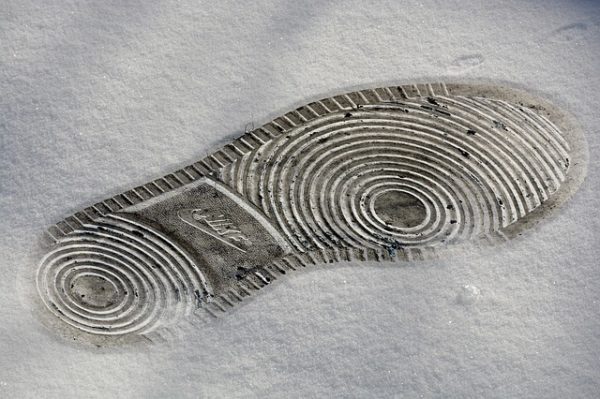
There are a lot of things that people get wrong when man tracking but there are three main things that people screw up on a regular basis. Avoid these pitfalls and you’ll be on your way to greater success.
Don’t Step On The Sign. We get eager, jump ahead, and then we’re stepping all over the tracks. Be patient when tracking and walk to the side of the tracks, not on top of them.
Don’t Imagine A Track. When you’re looking for a track intently, it’s easy to imagine the track shape in the random forms of nature created by little rocks, twigs, vegetation, and other surface debris. Take measurements and use the average stride to predict where a track will fall. This can help you differentiate whether it’s a real track or just your eyes playing tricks. If in doubt, find the next track and move on.
Don’t Forget The Target. Head down, eyes scanning, moving forward, then you’re suddenly face to face with the man who was making the trail! Never forget about the thing at the end of the trail. Engage all of your senses while tracking. Look up and look around often while tracking. If there EVER was a time for situational awareness, it’s while you’re man tracking.
Counter Tracking Made Easy

Forget about the nonsense you’ve seen on TV. Walking backwards in your own tracks or brushing away tracks with a tree branch are only going to make a greater disturbance. A disturbance that is more likely to be seen than before. If any group has a handle on counter tracking, it’s the man trackers in military and law enforcement circles. We should take a hard look at their practices since these folks deeply understand the value of hiding their own tracks as their lives may depend on it. To better understand the art of counter tracking, here’s a simple set of guidelines from the British method.
- Don’t step on something you can step over.
- Don’t cut vegetation that you can break.
- Don’t break anything that you can just bend.
- Don’t bend what you can simply move.
- Don’t move what you can walk through without touching.
- Don’t step on soft ground when something hard is an option.
- Don’t walk through water as it actually makes more of a disturbance.
Final Thoughts
Man tracking can tell you a lot about the security measures you need to take. It’s easy to get started using your own tracks and living environment. Study military and law enforcement methods as they’re the experts. Don’t learn from TV shows and movies as they’re often not accurate. Begin your training now before you really need to be able to man track for the security of the group.
